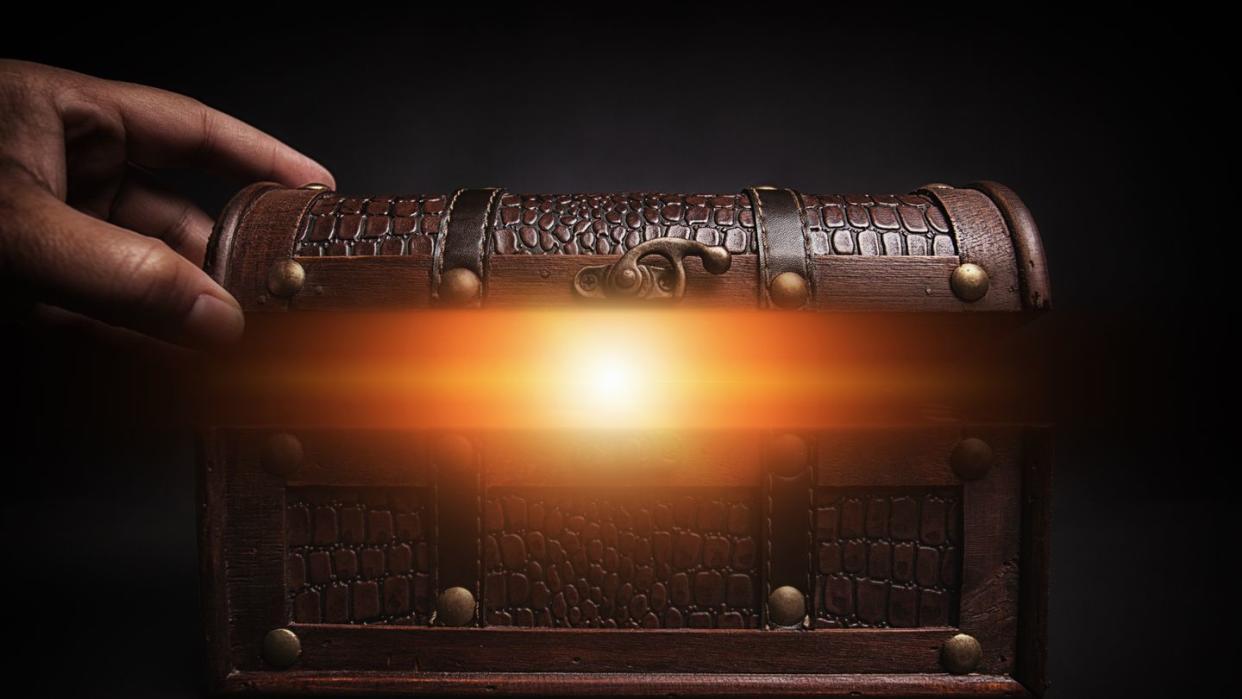Ancient Greek Temple Discovered Filled with Gold Jewels

An excavation on the Greek island of Evia uncovered an unknown temple near the Temple of Amarysia Artemis still overflowing with rich offerings.
Heavily used altars filled with ash found in the temple feature alabaster, vases, jugs, amulets, and jewelry.
The majority of the temple dates to the 7th century BC, but archaeologists discovered portions of the site that are even older.
The archaeological finds kept coming for a team of 50 researchers on the Greek island of Evia. But the kicker may have been locating 2,700-year-old altars full of precious jewels and historical remnants.
Nearby the ancient Temple of Amarysia Artemis on the country’s second-largest island, archaeologists discovered another temple—this one from the 7th century BC. And it came full of highly used altars, according to a translated statement from Greece’s Ministry of Culture.
Notable for its 100-foot length, symbolic of the hundred-meter temples of this period in ancient Greece, the find was fully uncovered in 2023 and features exterior walls and an arch on the west side. More intriguing, though, was the “significant number of structures found inside it,” the team said. These structures included several hearths that were likely used as altars.
A horseshoe-shaped altar was the most unique of the designs, and thick layers of ash—which was rich in charred bones—showed steady use. “The possibility that some of them predate the temple cannot be ruled out,” the statement reads. “The first level of use of the horseshoe altar yielded pottery dating to the end of the 8th century BC.”
The find didn’t stop at remnants of altars, either. The team found Corinthian alabaster, Attic vases, and locally-made ritual jugs. They also uncovered treasure of a shinier kind: gold, silver, coral, and amber jewelry, amulets from the East, and bronze and iron fittings.
The temple was built of rough bricks on a solid foundation of dry stone, showing that the ground was still swampy at the time of construction. Along the inner wall, the temple features pillars to support a tiled roof. The team discovered that there was likely a fire that destroyed a portion of the temple, which led to brick partitions being put in place to protect the remaining sections, and to a new section that was likely created at the end oof the 6th century.
In what the researchers believe are some of the oldest sections, they discovered Geometric period bronze figurines representing bulls and a ram. A clay bull head from the Mycenean period was also located on site.
And the site overall stretches even deeper into history than the temple itself, with test cuts showing remains of buildings from as far back as the 9th century BC.
“Although the investigation of the earliest of these levels has only just begun, the first discoveries suggest that the cult had its roots in the centuries after the end of the Mycenaean period,” the statement said.
Further excavations on the hill where the temple sits confirmed “imposing walls of the Early Copper Age,” the Ministry of Culture wrote in a translated Facebook post, “that undoubtedly belongs to a system of fortification of the prehistoric settlement.”
As researchers continue to discover older sections of the surrounding site—many showing the ancient way of life outside of the temple—they remain intrigued with the growth of the sacred temple on the landscape. Even if all the gold jewelry has already been found.
You Might Also Like


